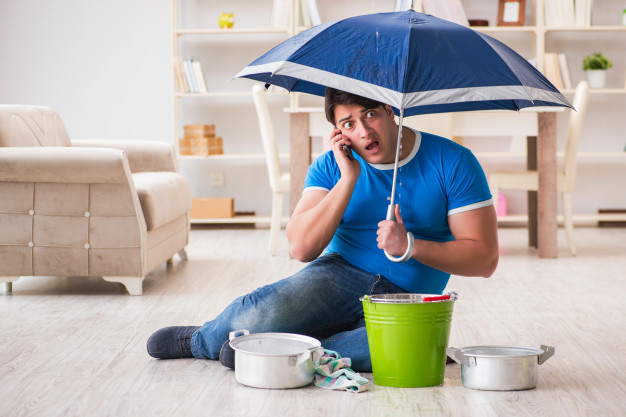
Keepsakes are a wonderful part of our lives. They connect us to our childhoods and the generations before us. For many people, they provide comfort, happiness, and a sense of security.
Yet maintaining keepsakes can be difficult – and these items are often delicate due to age. But that doesn’t mean that keeping your keepsakes (and your belongings in general) safe has to be an arduous task. We’ve broken down the most common risks to your keepsakes and belongings and how to mitigate those risks below.
Water
Water can enter your home and damage your valuables, and that damage can be costly. According to the Insurance Information Institute, the average claim from water damage is over $10,000. To prevent water damage, the Insurance Information Institute experts suggest the following:
- Prevent basement seepage by resealing your basement, making sure water drains away from the building and installing a backwater valve.
- Maintain your indoor plumbing systems by inspecting appliances, faucets, and tubs – and shut off the water supply when away on vacation.
- Keep valuables out of basements and on high shelves.
And if you’ve already had a water incident? The cleaning and restoration experts at SERVPRO have shared their best tips for reducing risks to your belongings after a flood incident:
- Remove excess water by mopping and blotting.
- Wipe excess water from wood furniture after removing lamps and tabletop items.
- Remove and prop up wet upholstery and cushions.
- Place aluminum foil or wood blocks between furniture legs and wet carpeting.
- Turn air conditioning on to maximize drying during the summertime.
- Remove colored rugs from wet carpet.
- Remove all art to a safe, dry place.
- Collect loose items from the floor.
Fire
Fire is another threat to your keepsakes, and according to the Insurance Information Institute, it’s the most expensive – the average claim for a fire-related incident is nearly $80,000. To keep your valuables safe, invest in a fire-proof safe to prepare for the unexpected. Only take your valuable items out of the safe when they’re being used to ensure that they’ll be with you to enjoy for generations to come.
Pests
Pests can wreak havoc on your valuables, especially if they’re fabric – such as a vintage dress or an antique tablecloth. Pest prevention usually works in two parts – preventing the pest from getting into your home in the first place and dealing with them when they’re around. The Spruce has you covered for keeping your home and your belongings safe:
- Limit where you eat, and clean up quickly: crumbs attract all sorts of creepy-crawlies that can damage your keepsakes. Limit where you eat and aim to clean up immediately afterward.
- Don’t store dirty clothes: there’s no other way around it – dirty clothes attract bugs, and bugs can wreak havoc on any vintage keepsake items. Clean your clothes before you store them for the seasons, and if you’re worried about moths, try a cedar spray.
- Store wood outside: another prevention tactic for removing bugs that could damage your keepsakes is to stack your wood away from the house and make sure that air can circulate. Wood attracts bugs, which can present a huge problem to your belongings (and your home itself – think termites and carpenter ants).
Weather
Weather damage due to cold or heat can have a slow but catastrophic effect on your keepsake items. The experts at Centron Storage have compiled their best tips for keeping your items in tip-top condition:
- Clean items before they go into storage: dirty items can cause a whole host of problems, from the moths and other pests mentioned above, as well as general wear and tear. Wipe, rinse, and dry everything, particularly if you’re dealing with items involved in food preparation – rats and mice are attracted to these smells. Dirt and grime can also damage fabric and paint if left too long.
- Repair items before they go into storage: never store anything that doesn’t work, because odds are, you’ll forget about it – and you’ll be dealing with a broken whatever-you-needed.
- Use packing material: polystyrene peanuts are great for insulating your belongings during the cold winter months and add a level of security and organization to your storage process.
- Use wool or cotton covers: insulate your belongings with wool covers to protect them from cooler temperatures. Do your best to avoid vinyl or plastic covers – these products trap moisture, which can do incredible damage to your belongings.












